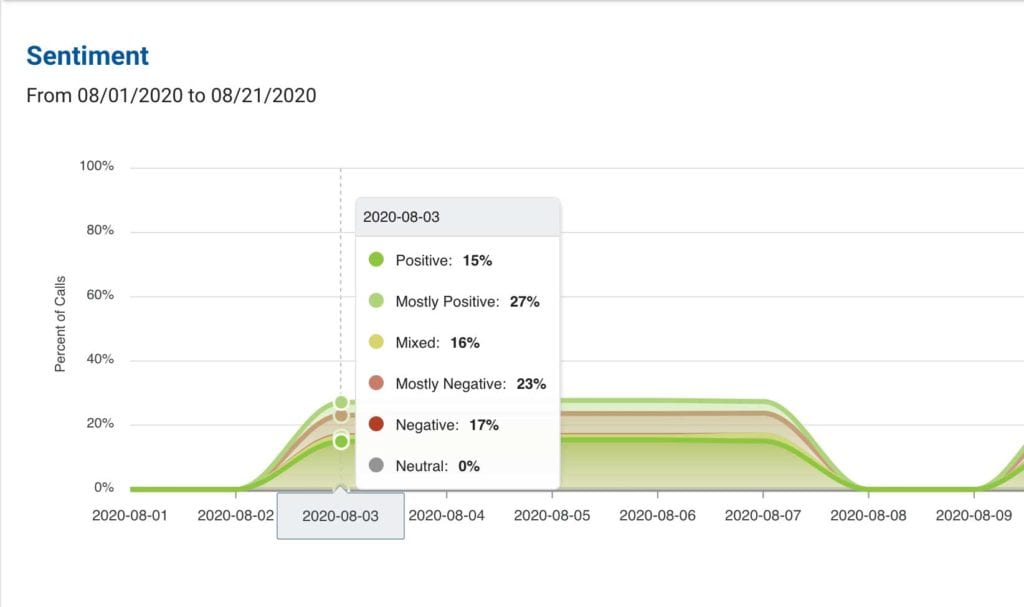Address
38 Eastwood Drive, Suite 401
South Burlington, VT 05403
Work Hours
Monday to Friday | 8AM—5:30PM EST


Employee-customer interactions are a key part of a business’s success, particularly over-the-phone interactions. These conversations can have a profound impact on the customer experience. That’s why many businesses use call recording and speech analytics tools to enhance quality management.
But how a person says something can be just as important as what was said in the conversation. Many of us have heard someone say one thing, but the person’s tone of voice indicated something entirely different. That’s why analyzing customer tone during phone conversations is a crucial part of creating an exceptional customer experience. Sentiment analysis helps improve quality management in the following ways.


It’s easy to recognize and fix problems within the business when customers explicitly point them out to you. But not all customers are so forthcoming, leaving you to guess what your customers find confusing or frustrating.
Sentiment analysis technology scans each call for both words and tone to detect key moments in a phone conversation in which customers express satisfaction or dissatisfaction, even if they’re not directly saying so. The technology works by simply tagging key phrases as positive or negative; this allows managers to instantly review call transcripts to determine common pain points.
For instance, the CallFinder dashboard in the image below* shows that 17% of calls on August 3rd, 2020 contained a negative sentiment. Managers can then search all transcripts during that date range for keywords that may indicate a negative experience, such as “speak with a manager.”


Then the manager can see that the agent, Andy Wilkins, had at least one conversation with a customer who wanted to speak with a manager. The manager can also view the entire transcript and listen to the call to get the full picture.
This knowledge can then be used to find effective solutions to customer pain points. This is especially useful now that many agents are working remotely (See: “Supporting Customer Service Departments in the Wake of the Coronavirus” for more information on how to manage WFH employees).
Quality management isn’t just about the customer’s experience with your agents; it’s also about their experience with your products. Sentiment analysis can determine which of your goods and services are a success with customers, and which ones are missing the mark. This tool can identify whether customers truly seem excited about a product, or they were more indifferent or resistant.
Creating a search for particular products or services within the dashboard can reveal your customers’ true opinions about what you offer. These discoveries help improve the quality of your current products, as well as create new ones that you can be confident your customers will embrace.
The interactions between your agents and customers are a key component of quality management. How an agent makes a customer feel during a phone call can have a tremendous impact on customer loyalty. Sentiment analysis allows you to quickly see which agents receive an overwhelmingly negative or positive response from customers.
Concrete data like this is a valuable tool in agent training. Not only does it provide examples to use in agent training guides, but it also helps you keep track of agent progress and your quality management process.
Sentiment analysis reflects the true Voice of the Customer and enhances your quality management efforts. From better products to a better customer experience, sentiment analytics is a surefire way to keep your customers happy. Schedule a demo to see how it works!
*©800response and 800response.com, 2020. Unauthorized use and/or duplication of this material without express and written permission from this site’s author and/or owner is strictly prohibited.